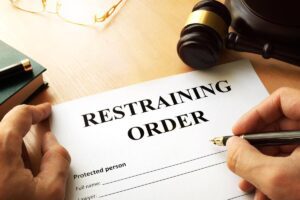Above all, your safety must come first. Knowing how to get a restraining order in South Africa might be a key step in protecting yourself and your loved ones if you’re dealing with abuse or a stalker. In order to ensure your protection and peace of mind, this article seeks to give you a clear and comprehensive overview of the process of obtaining a restraining order.
Understanding a Restraining Order’s Importance
A restraining order serves as a legal instrument to protect you in cases of harassment, stalking, or abuse. It’s a court order that puts a legal barrier between you and the person harming you by forbidding them from approaching or getting in touch with you.
Who Can Get a Restraining Order in South Africa?
It’s critical to ascertain your eligibility for a restraining order before moving forward. If you have experienced harassment, stalking, assault, domestic violence, or any other type of abuse that puts your safety in danger, you may be eligible to apply for a restraining order in South Africa.
Types of Restraining Orders in South Africa
Restraining orders come in a variety of forms, each created to address a specific problem. They consist of:
The purpose of a protection order is to shield domestic abuse or violence victims. It stops the abuser from getting in touch with you or approaching you.
Harassment Order: If you are the target of ongoing harassment, a harassment order can prevent the harasser from contacting you in any way.
A stalking order can legally stop a stalker from approaching you if you are the victim of stalking or being followed.
How to Get a Restraining Order in South Africa: The Steps
Check out the Local Magistrate’s Court: Visit the magistrate’s court that is most convenient for you to begin the process. You’ll need to describe your circumstance and ask for the required paperwork for a restraining order.
Fill out the Forms: The court employees will give you the necessary forms. Complete them completely and with all necessary information. Don’t be afraid to seek for help if you need it.
You must prepare an affidavit outlining the events that led to your need for a restraining order. Be sincere and as thorough as you can be.
Speak with a Domestic Violence Support Group: There are numerous groups that support victims of domestic violence if you have questions or need guidance. They can offer you emotional support and assistance in understanding the legal process.
Once your forms and affidavit are finished, give them to the court clerk for submission. They’ll advise you on what to do next.

Temporary Order: Depending on the circumstances, you can be given a temporary order right away, providing you with security up until the court hearing.
Hearing in court: A hearing date will be scheduled. Present your argument and any supporting evidence during this hearing. It’s important to be open and collected while discussing your experience.
Final Order: The court will issue a final order if it determines that your circumstances call for one. This legally requires the person who is harming you to keep away from you.
The Restraining Order’s enforcement
It’s critical to comprehend how to enforce the restraining order after you obtain it:
A copy of the restraining order should always be carried with you. This guarantees that, if required, you can give it to law enforcement.
Inform the authorities: Call the police right away if the person disobeys the restraining order. Give them the information and proof they require.
Stay Alert: Even while a restraining order provides legal protection, it’s still critical to remain alert. Share the order with friends, family, and coworkers so that they are all aware of it.
Restraining Order vs Protection Order
A restraining order and a protection order are legal instruments designed to provide individuals with a means of protection against harassment, threats, or violence. While the terms are often used interchangeably, they can have distinct legal implications and applications depending on jurisdiction. Here’s a closer look at the differences between a restraining order and a protection order.
Restraining Order: A restraining order is a court-issued directive that limits the actions of one individual concerning another. It is typically requested by someone who feels threatened or harassed by another person. Restraining orders can encompass various prohibitions, such as no contact, no communication, or staying a certain distance away from the protected party or their residence.
In many cases, restraining orders are associated with domestic situations, including cases of domestic violence or abuse. They serve to prevent the alleged aggressor from approaching or contacting the victim. Violating a restraining order can result in legal consequences for the person subject to the order, such as fines or imprisonment.
Protection Order: A protection order, on the other hand, is a broader term that encompasses various legal tools designed to safeguard individuals from harm. It can include restraining orders, but protection orders may also encompass other measures, such as emergency protective orders or stay-away orders. Protection orders are not limited to domestic situations and can be sought in cases of harassment, stalking, or any situation where an individual feels threatened.
Protection orders are not always permanent; they can be temporary and are often issued quickly to provide immediate protection. They are typically issued by a court after a hearing where evidence of the threat or danger is presented. Violating a protection order carries legal consequences, similar to violating a restraining order.
Key Differences: While the terms are sometimes used interchangeably, the key difference lies in the broader scope of protection orders. A protection order can encompass various types of directives beyond restraining orders, tailoring the legal remedy to the specific circumstances of the case.
Conclusion
I hope this guide helps you on how to get a restraining order in South Africa.
Your health and safety are our top priorities. You may take charge of your circumstances and defend yourself from violence by learning how to obtain a restraining order in South Africa. Never forget that there are support networks and legal options available to help you on your journey to a safer life.


